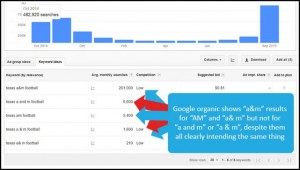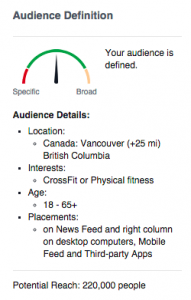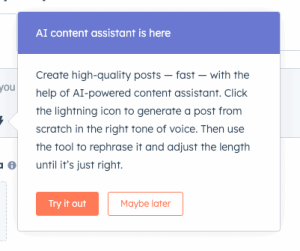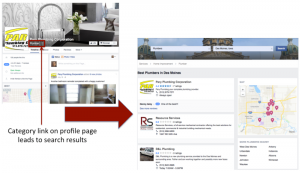
Looking to spruce up your PPC management? As you’re probably aware, this isn’t the easiest accomplishment to make. But don’t despair!There are several tasks that you can start on today in order to get things on the right track. Just take a look at the checklist below, cross off the items you’ve already taken care of, and create a plan of action for the ones you haven’t.
- I’ve got my bid rules under control
If you haven’t assessed your bidding since you first put it in place, it’s time for some serious PPC management reflection. Most of us spend a lot of time setting up our bid rules and how they’ll affect our campaigns. But, unless you continue to monitor them, those rules you put in place may actually start to have a negative impact. Not only is this a huge bummer, but it can undo all the success you made earlier on. So—unless you’ve been a PPC all-star and can already cross this item off our PPC management checklist—you need to start going through your bidding rules and see how they’re currently affecting your campaigns. Find out what’s working well, look for any areas for improvement, and make sure your bid rules aren’t doing anything fishy.
- I’m tracking my conversions
There are several reasons why not tracking conversions is not a good idea. Most notably, if you don’t track where your conversions are coming from, you won’t know if your PPC management tactics are actually making a positive impact. If you haven’t added a conversion tracking code, do it now.
But even if you are tracking conversions (gold stars for you), it’s also crucial that you ensure you’re tracking them correctly. If any of the following sound familiar, then you may not have your conversion tracking code properly installed:
- Clicks and conversions are equal. Unless you’re selling the world’s best product for a dime, it’s unlikely that every single person who clicks on your ad would follow through with the conversion process. When this error occurs, it’s usually because you’ve mistakenly added the conversion tracking code to your landing page rather than your order confirmation page.
- Your number of conversions is shockingly low. If you’ve pumped a lot of time and money into your PPC campaigns and you’ve got nothing to show for it, it’s possible that you’re not tracking phone conversions.
- You’re reporting low sales, and yet your campaigns are showing high conversion rates. If this is the case, ensure that you’re actually tracking conversions and not product or homepage visits.
- Clicks and conversions are equal. Unless you’re selling the world’s best product for a dime, it’s unlikely that every single person who clicks on your ad would follow through with the conversion process. When this error occurs, it’s usually because you’ve mistakenly added the conversion tracking code to your landing page rather than your order confirmation page.
- My ad groups are relevant
If you have a bunch of different ad groups all containing 20-plus keywords, it’s time to do some trimming. Aim to minimize the number of keywords to only those that are most relevant. While it may seem like adding a whole bunch of keywords will get more visibility on your ads, it can actually have a very negative impact. This is because your ads will show up in search results for vaguely related search inquiries, which means that your chances of gaining conversions are slight. Plus, in order to have an ad that correlates with that many keywords, you’d have to make the messaging and the landing page pretty generic.
So, your next step toward improving your PPC management is to cut those fatty keywords off your ad groups. Limit your ad group keywords only to those that share a very similar and specific theme. This will encourage searchers to click on your ad because it will advertise their exact needs. Even once you’ve completed this PPC management checklist, go back periodically and check to see if all the ad group keywords you’re using are still relevant.
Take a look at the example below. This one ad is triggered by all of the keywords listed on the right. Because of this, the ad is hardly relevant to the majority of them. Eliminating some of these unnecessary keywords within the ad group could help improve results.

- I have more than one active ad per ad group.
In order to ensure that you’re running the most effective ads, you need to test different variations to see which one performs the best. Without actually testing it out, it’s only a guessing game—and you can be wrong more often than you’d think.
That being said, don’t go overboard either. You shouldn’t run more than three variations at a time, and the ads you run against each other should have minimal differences between them (otherwise you won’t know what’s actually impacting the performance). And remember, even once you’ve picked the champion, your job doesn’t end there. Create a new variation for additional testing so that you’re always aiming for improvement.
- I’m utilizing and making the most of ad extensions
Ad extensions are a great way to give some extra appeal to your ad. Plus, ad extensions do actually have an impact on your ad rank as well. Make sure that your extensions and snippets make sense for your business and that they’re working properly. For example, if your business only answers phone calls between 9 A.M. and 5 P.M., don’t run your call extension around the clock. Also, if your business only sells online, make sure that Google Maps doesn’t display your HQ as a physical storefront.
AdWords also has automated extensions now. Check on their performance by viewing your Automated Extensions report, and ensure that they’re making a positive impact. If they’re not, you can turn them off in the advanced extension settings.

- I’m using negative keywords and monitoring for new ones
While selecting the best and most relevant keywords for your campaign is crucial, you can accrue wasted ad spend from people looking for a product or service that you don’t offer. Negative keywords are your best defense weapon when it comes to eliminating irrelevant clicks. For example, say you own a Mexican restaurant, but you don’t do event catering. You should add “catering” and other related terms as negative keywords. This way, your ad won’t appear for people searching for Mexican restaurants that cater.
While there may be some negative keywords that seem obvious to you, you need to consistently monitor your campaigns to look for new negative keyword opportunities that you may not have thought of. Look at your query report and see what kinds of terms have been triggering your ads. For example, if you see a lot of people searching for “Mexican restaurant delivery,” you could add “delivery” to your negative keyword list.
And finally, make sure that you’ve properly set up the match type settings for your negative keywords. If you’ve selected “exact” match, they’re not going to do much to help you.

- I’m taking advantage of device-level targeting and bidding
You can adjust your targeting and bidding by the type of device where the search query is coming from. As part of your PPC management, monitor where most of your leads and conversions are coming from. For example, if you’re wasting money displaying your ads to smartphone users, you may want to consider lowering your bid or eliminating the device type altogether.
However, since technology changes rapidly, you should continuously monitor this. For example, smartphones continue to become more popular and optimal for internet browsing. Because of this, your mobile metrics from now compared to just a few years ago would likely be vastly different.

- I’m using retargeting
Retargeting ad groups can be a great way to catch conversions that you otherwise might have missed. Create ad groups for site visitors who looked at least two product pages without converting. You could even limit to people who went to the cart page without checking out. This way, you’re using your ad spend on people who are already interested in your product. All you need to do is give them that little boost over the edge.
- I’m monitoring my search partners data
Search partners is generally always set to on, and it can help you spend your budget more wisely and lead to more conversions. But, you still need to monitor it to make sure it actually is making a positive impact. If you just rely on assumptions and don’t actually check on its performance levels, you may suffer from high cost per conversion and low click through rates. Checking in on the numbers regularly will let you know whether or not it’s worth it to have it turned on. For example, if it’s eating up your budget but only getting 1 out of every 15 conversions, you may want to use that money on your search network instead.
- I’m Killing My Copy-Darlings
As your college English professor would say, you must kill your darlings. In other words, while you may have totally fallen head over heels with your witty ad copy, you still have to test it to make sure it makes the most sense for your ad. If you run it against another copy variant and it loses, you have to trust the data and make the switch. Holding on to old copy just because you like it is a great way to miss out conversions and waste your ad budget.
- I’ve tested my ad position
While it may seem like you should always shoot for the top ad position, you may be surprised to learn that this isn’t always the case. Of course, you’ll never know unless you test your ad position. For example, sometimes people click on the top result simply because it is the top result. They may not be seriously interested in your ad or what it says. For this reason, holding the second or third position may result in more quality clicks. Test for your best ad positioning by adjusting the price of your cost per click. For instance, you may not have to go with Google’s suggested bid price—the lower bid may be enough. Test the results to find out.
You can see your ad’s current position by checking AdWords:
- I’ve taken a hard look at my competition
In order to create the best ads for your business, you need to know what your competitors are doing—i.e. which keywords they’re using, what their ad copy is, and what their landing pages look like. Try to put yourself in the customer’s frame of mind and objectively decide which ad is more clickable and which landing page is more likely to get the customer to stick around and convert.
Which one of these ads looks the most appealing to you?

- I’m taking my visitors to an appropriate landing page
One of the most important parts of PPC management is to make sure that your PPC ads lead to an appropriate landing page. A common mistake that many people make with PPC ads is to have an ad link to their site’s homepage. The problem with this is that it makes for poor ad to link matching, and you’ll likely miss out on a lot of conversions if consumers aren’t sure what they’re meant to do. Instead, link to a custom landing page with a clearly crafted CTA that inspires the consumer to convert.

Digital & Social Articles on Business 2 Community
(79)
Report Post










